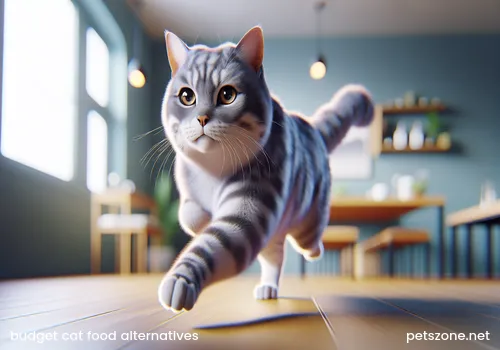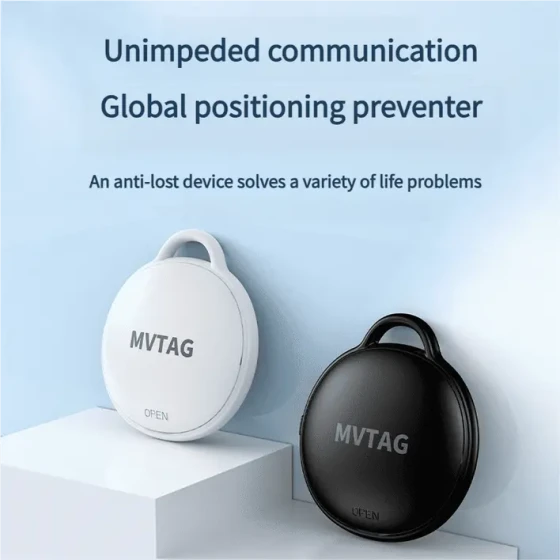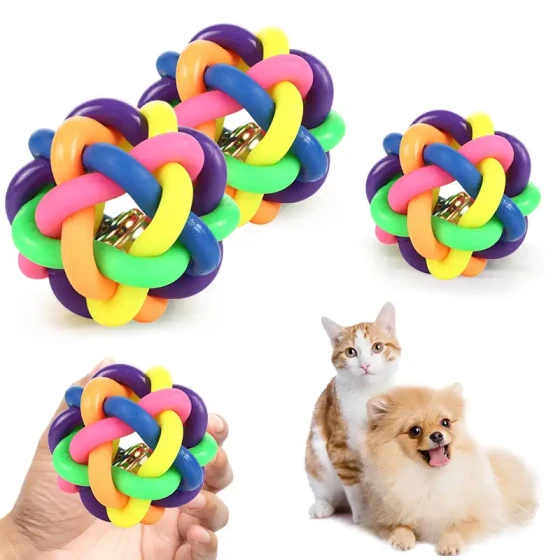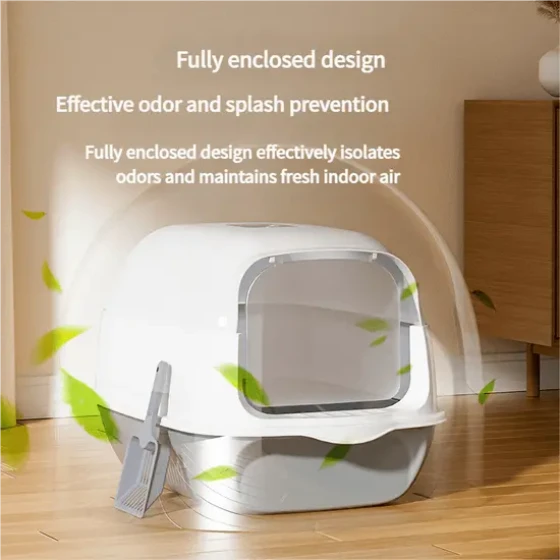What to Feed Cats When You Can’t Afford Cat Food_Highly Cost-Effective Nutritional Foods Essential for Poor Cat Owners
For cat owners with limited budgets, providing food that is both nutritionally comprehensive and cost-effective is indeed a challenge. In fact, “can’t afford cat food” is not unsolvable; the key lies in understanding the essential nutrients cats need and finding cost-effective, safe, and reliable alternatives or supplements. For example, choosing mid-priced quality commercial cat food, scientifically combining cooked meats with necessary nutritional supplements as homemade supplements, or even taking advantage of promotions and bulk purchases to reduce costs. But the core principle is to ensure cats receive balanced protein, fat, vitamins, minerals, and taurine—the crucial nutrients—and never sacrifice their health to save money.

Keeping a cat is a responsibility; even with a tight budget, you cannot let your furry child go hungry or suffer malnutrition. Cats are obligate carnivores, and their nutritional needs differ greatly from humans. Simply feeding them human meals is far from enough and may even be harmful. Understanding the core nutritional needs of cats is the first step in formulating a cost-saving feeding plan.
What Are the Core Nutritional Needs of Cats?
The body structure of cats determines that they must obtain most of their energy and nutrients from animal-based foods. The most important aspects include:
- High-quality animal protein: This is the main source for building and repairing cat tissues as well as providing energy. Chicken, fish, beef, and other meats are excellent protein sources.
- Moderate animal fat: Provides energy, assists in the absorption of fat-soluble vitamins, and maintains healthy skin and coat.
- Taurine: This is an amino acid cats cannot synthesize sufficiently on their own and is critical for heart, vision, digestion, and immune systems. Lack of taurine can lead to severe health problems, including blindness and death. It is a key ingredient that must be added to cat food and one of the main reasons human food leftovers cannot meet cats’ needs.
- Various vitamins and minerals: Including vitamins A, D, E, K, B-complex vitamins, and minerals like calcium and phosphorus that play vital roles in cats’ metabolic processes.
- Water: Especially important for a cat’s urinary tract health.
How to Choose Cost-Effective Commercial Cat Food?
Not all cheap cat foods lack nutrition. There are some brands with good cost-performance on the market, and with the right selection skills, you can find relatively high-quality products within your budget.
- Check the ingredient list: Prioritize cat food where the first few ingredients are specific meat types (like chicken, chicken meal, fish, salmon meal) rather than "grains," "corn," or "by-products." Good protein sources are the cornerstone of cat food.
- Pay attention to protein content: Protein content for adult cat food is recommended to be above 30%.
- Confirm taurine supplementation: Reputable cat foods will clearly state if taurine is added.
- Compare unit prices: Don’t just look at the price per bag; calculate the cost per kilogram or pound. Sometimes larger packages, although more expensive overall, offer better unit prices.
- Look out for promotions: E-commerce platforms or pet stores often have cat food sales, discounts, or freebies. Taking advantage of these opportunities can save a lot.
- Read user reviews: Refer to real reviews from other cat owners to understand palatability and the effects on cats’ digestion and stools.
Of course, even if you select cost-effective cat food, you must control feeding amounts based on your cat’s age, weight, and activity level to avoid waste.
Homemade Cat Food: A Double-Edged Sword?
For extremely tight budgets, homemade cat food seems like an option. However, feeding cats only human meal leftovers is absolutely not acceptable! Human food is high in oil and salt, with many seasonings. Long-term feeding will burden cats’ kidneys, hearts, and other organs and cause nutritional imbalances, especially taurine deficiency.
If you consider homemade cat food, you must follow these principles:
- Primarily use cooked meat: Choose chicken breast, fish (bones removed thoroughly), beef, lamb, etc. Cooking methods should be boiling or steaming without any seasoning.
- Must supplement taurine and other nutrients: This is the most critical and easily overlooked step in homemade cat food. Plain meat cannot meet all of a cat’s nutritional needs, especially taurine. You need to purchase professional cat nutritional supplements (including taurine, multiple vitamins, and minerals) under the guidance of a vet or pet nutritionist and add them as directed.
- Never feed only one type of food long-term: Even homemade diets should have diverse meat sources and a small amount of cooked vegetables (such as pumpkin, carrots, though not mandatory) and carbohydrates (like rice, sweet potatoes, in very low proportions) to ensure nutritional completeness.
- Consult professionals: Before starting homemade cat food, it is strongly recommended to consult veterinarians or professional pet nutritionists to help formulate a scientifically balanced recipe and avoid malnutrition.
Although homemade cat food can save money, it is complicated and requires time and effort to learn and prepare. Incorrect nutrient balancing can harm cats’ health. Therefore, unless you are highly confident and capable, it is not recommended to rely solely on homemade food. You can consider using homemade food as a supplement to commercial cat food, such as feeding steamed chicken breast once or twice a week as a treat or snack.
Human Foods Cats Must Not Eat!
For your cat’s health, some human foods must absolutely not be given to cats, regardless of how tight your budget is:
- Onions, garlic, and their products: Destroy cats’ red blood cells, causing anemia.
- Chocolate: Contains theobromine, which is toxic to cats and can be fatal in severe cases.
- Grapes and raisins: May cause kidney failure in cats.
- Alcohol: Even small amounts severely damage cats’ liver and brain.
- Raw fish and raw meat: May contain parasites or bacteria; raw fish contains thiaminase that breaks down vitamin B1 in cats, leading to deficiency.
- Bones (especially cooked poultry bones): Easily splinter and injure cats’ digestive tract.
- High oil, salt, and sugar foods: Burdens your cat’s organs and easily cause obesity and diseases.
- Milk and dairy products (in some cats): Many adult cats are lactose intolerant and drinking milk causes indigestion and diarrhea.
Hydration Is Equally Important!
Many cats eating only dry food do not take in enough water, increasing the risk of urinary system problems. On a limited budget, you can increase your cat’s water intake by:
- Providing ample, clean drinking water: Change fresh water daily.
- Using wide-mouth water bowls: Some cats dislike their whiskers touching the bowl edge.
- Purchasing cost-effective wet food or canned food: Wet food has high moisture content and effectively supplements water. It can be mixed with dry food or used weekly to "improve meals."
- Adding a small amount of water to dry food (if the cat accepts): But beware wet food can easily breed bacteria and requires timely cleaning.
Feeding Tips
- Buy in bulk: If possible, buy large packages of cat food at once, which are usually cheaper than smaller packages. But pay attention to moisture and insect prevention, and store them in a cool, dry place.
- Proper storage: Use sealed containers or bags to keep cat food fresh and prevent spoilage.
- Reduce treats: Commercial treats are often expensive and low in nutritional value. Use cooked chicken cubes or other cat-favored foods as rewards instead.
- Make your own catnip toys: Buy dried catnip and fabric to sew simple toys yourself, which is much cheaper than buying finished toys.
Frequently Asked Questions
- Can cats eat rice? Rice is not an essential food for cats and has lower digestibility compared to proteins and fats. A small amount as a supplement is okay, but it cannot be a staple or fed alone.
- Can human canned tuna be fed to cats? Human canned tuna usually contains too much salt and lacks taurine, making it unsuitable as a long-term staple or snack for cats. If given occasionally in small amounts, choose no-salt, oil-packed, or water-packed (water-packed is better) tuna and drain the liquid thoroughly.
- How many times a day should cats be fed? Kittens require small, frequent meals 3-4 times daily. Adult cats can be fed twice daily. Scheduled feeding helps establish regular digestion habits.
- What happens if you suddenly change cat food? Sudden changes may cause digestive upset, vomiting, or diarrhea. It is recommended to use a "seven-day gradual transition" method, gradually increasing the new food ratio and decreasing the old to let the cat’s stomach adapt slowly.
In conclusion, even with a limited budget, you can help your cat eat healthy and save money. The key is to invest effort in understanding your cat’s nutritional needs, selecting cost-effective products, and adopting scientific feeding methods. If you have any doubts about your cat’s diet, consulting a professional veterinarian is the best choice. After all, your cat’s health is priceless.



